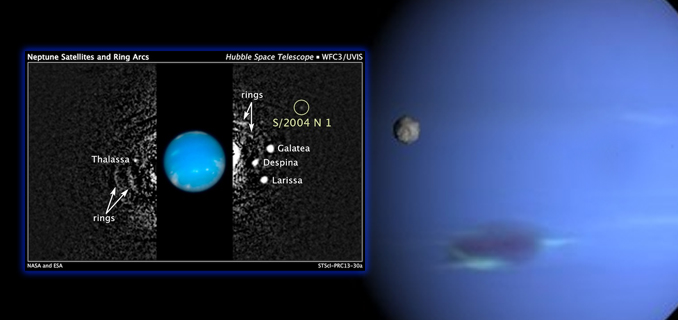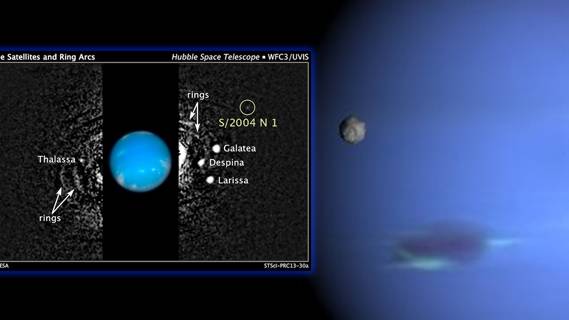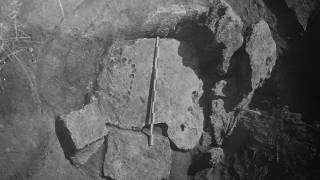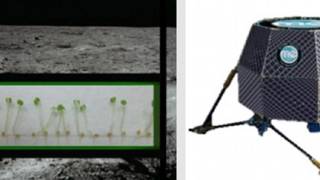New Moon Discovered Around Neptune in Old Hubble Images
Source: wired.com

Our blue and gassy outer planet Neptune hosted 13 known moons until today. Now, there are 14.
The new moon, known as S/2004 N1, is so small and faint that it escaped detection by NASA’s Voyager 2 spacecraft, which flew by Neptune in 1989.
Just 12 miles across, the moon orbits outside the planet’s ring system, carving a rut into space about 65,400 miles away from the ice giant. But S/2004 N1 is a little speed demon: It completes its 372,000-mile orbital journey in just 23 hours.
“This is a moon that never sits still long enough to get its picture taken,” said the SETI Institute’s ace moon-finder Mark Showalter, who discovered the moon while studying long-exposure, archival images taken by the Hubble Space Telescope. It’s one of a half-dozen moons Showalter has found, including Mab and Cupid around Uranus, Saturn’s shepherd moon Pan, and the two tiniest of Pluto’s moons, newly named Kerberos and Styx.
Does finding moons ever get boring? Nope. “It’s a rush,” Showalter said.
Showalter first spied something that could have been a new Neptunian moon on July 1. He’d been studying the planet’s rings, and thought to look a bit farther out. “There was this little dot sitting there,” he said. “It looked like it could be a moon.”
Because S/2004 N1 is so dim, Showalter needed some time to confirm the moon’s presence. After aligning and combining about 15 sets of Hubble images taken between 2004 and 2009, he determined that the dot was, in fact, a moon. Roughly 150 images helped him plot the satellite’s orbit. “You can’t see it in the individual images, but when you combine images, it turns up,” he said. “It turns up very consistently.”
Now, he says, he’d like to apply the same technique to long-exposure images of the other outer planets, and see if there might be more dim satellites playing hide-and-seek.
[...]
Read the full article at: www.wired.com






















